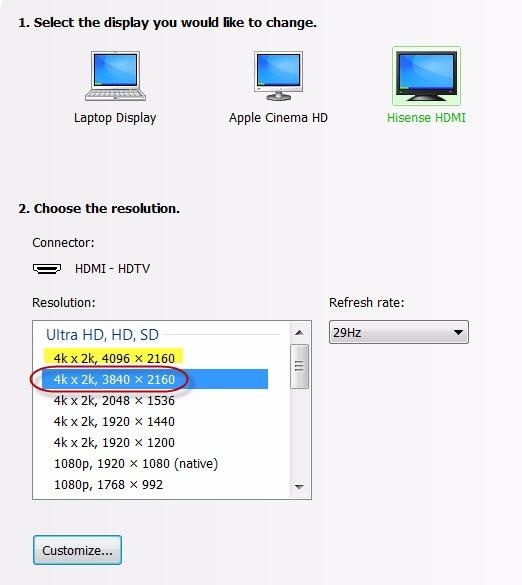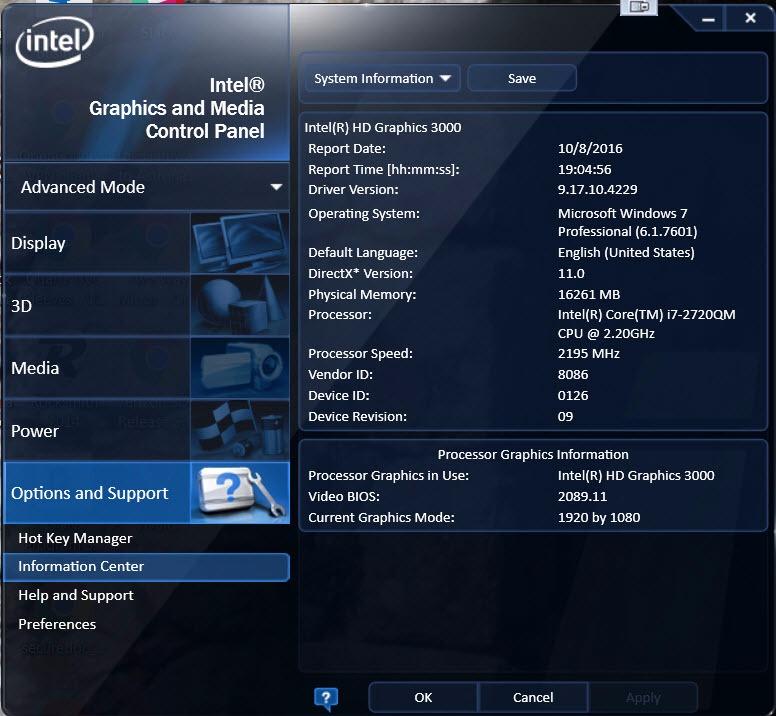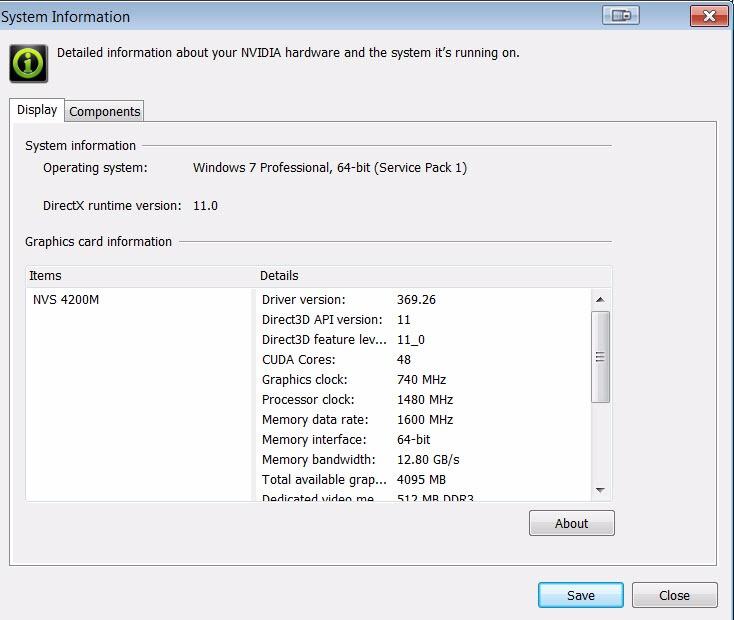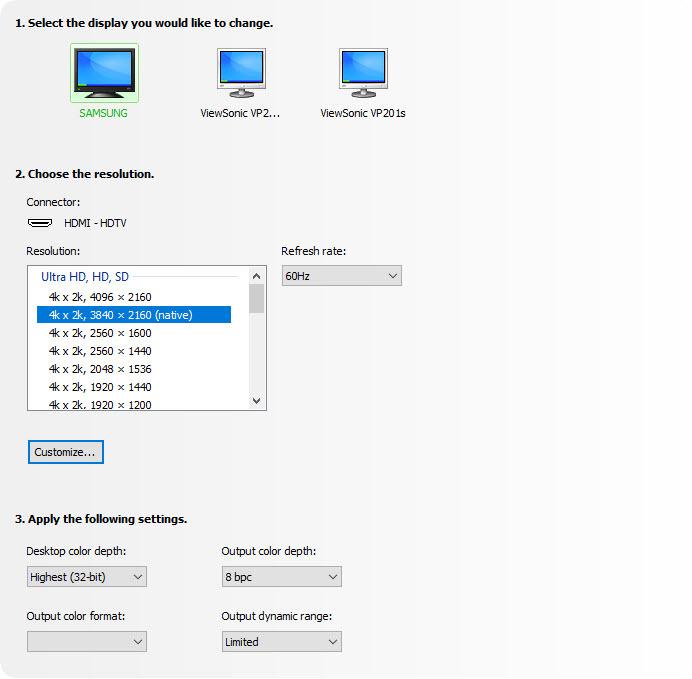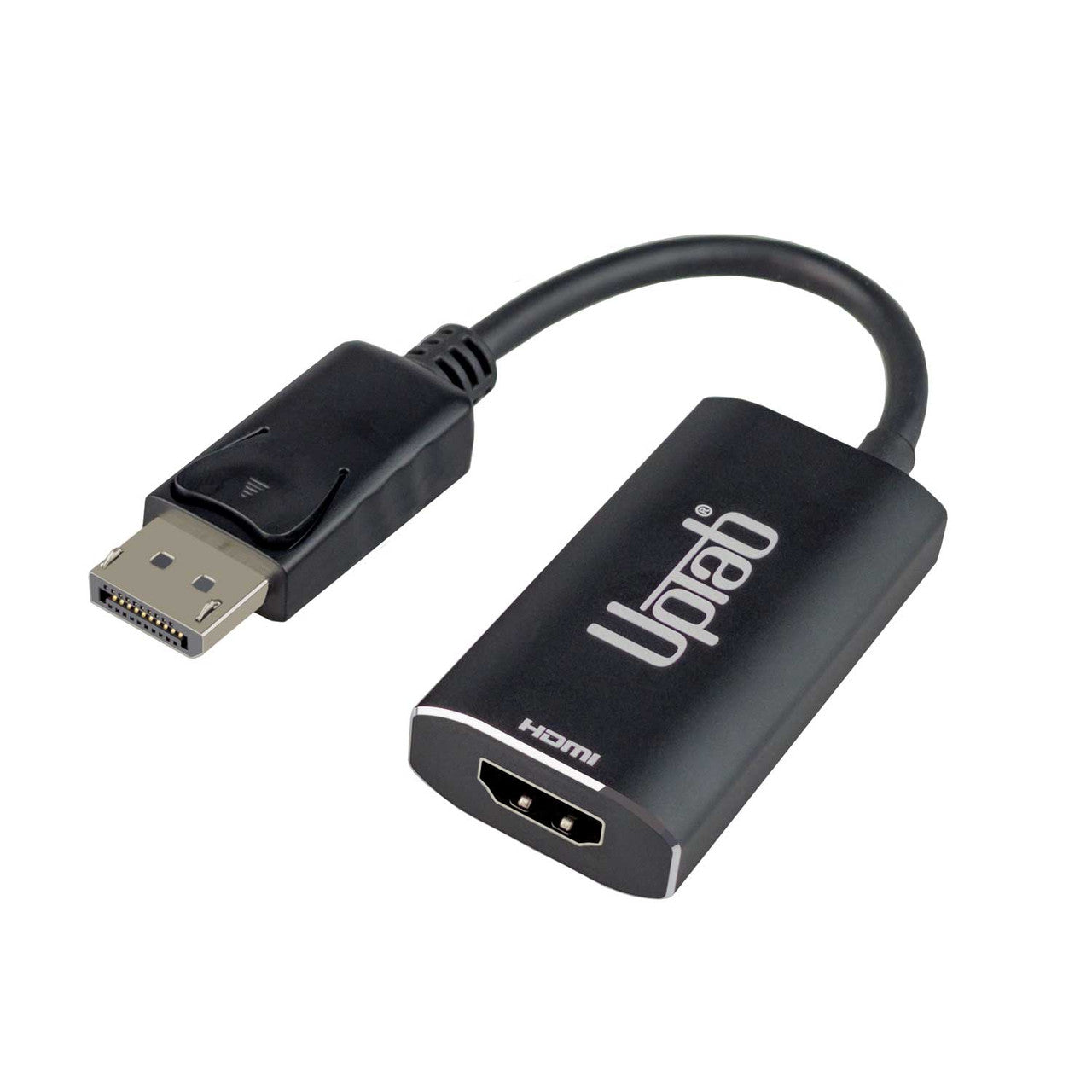
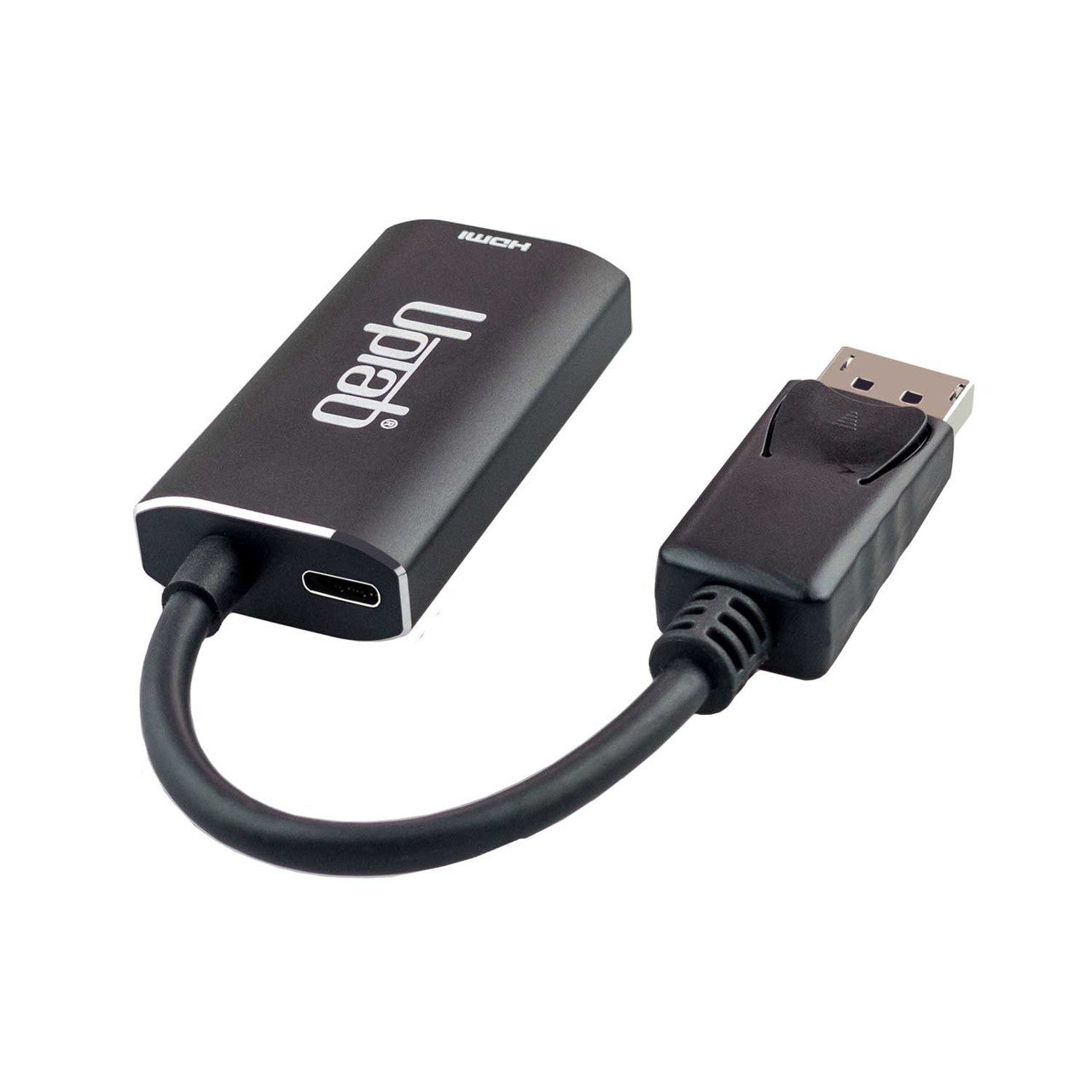
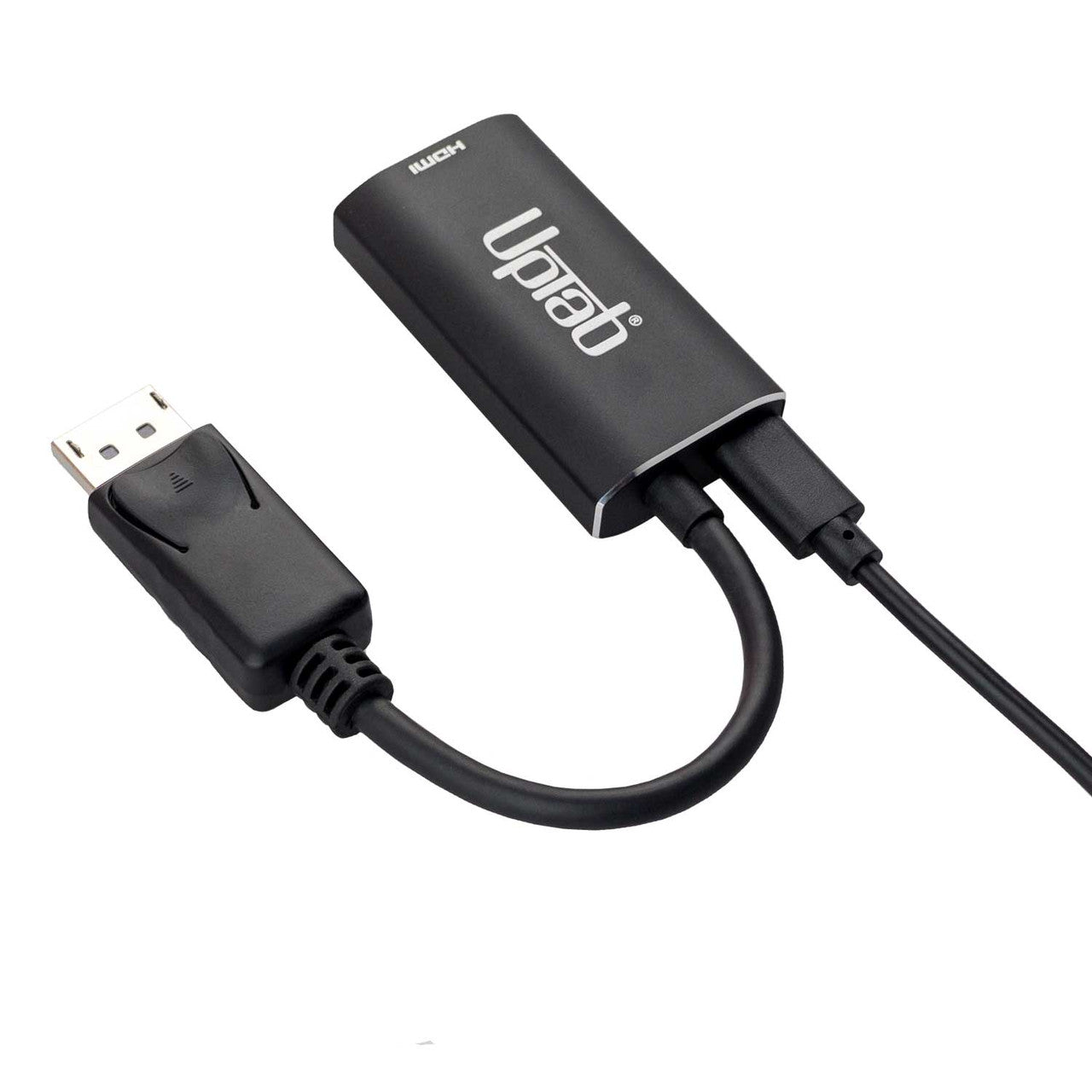
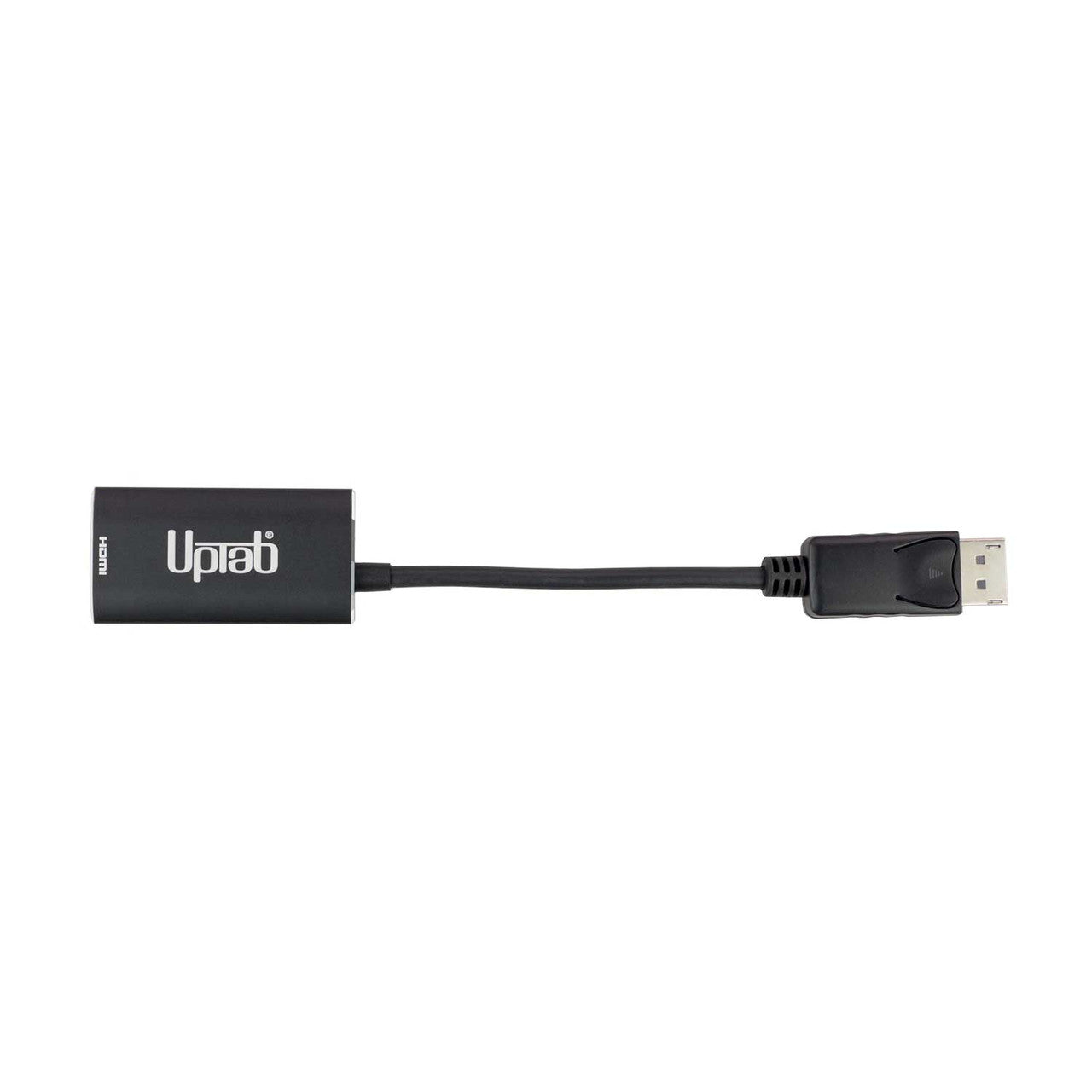
Adaptador activo DisplayPort 1.4 a HDMI 2.1 8K 60Hz HDR
About this item
Combina bien con
ENVÍO EL MISMO DÍA. Haga su pedido antes de las 11 a. m. (EST)
Envío gratuito en pedidos superiores a $50
Apoyo técnico
Devolución en 30 días
Garantía de 1 año

Adaptador activo DisplayPort 1.4 a HDMI 2.1 8K 60Hz HDR
Detalles del producto
Conéctate a una pantalla HDMI Ultra HD con Alto Rango Dinámico (HDR) desde una computadora compatible con DisplayPort con el Adaptador Activo DisplayPort. Diseñado específicamente para quienes disfrutan de la informática, los gráficos y los juegos de alto nivel. HDMI 2.1 de hasta 48 Gbps permite una reproducción de video 8K fluida, especialmente al combinarse con una velocidad de fotogramas de 60 Hz y HDR, creando colores y movimientos realistas y brindando a los usuarios la experiencia visual definitiva. Convierte la señal de video DisplayPort a hasta 8K 7680×4320 a 60 Hz con DSC o 4K 4096x2160 a 120 Hz con DSC, incluyendo 1440p a 240 Hz. Lo mejor de todo es que el Adaptador Activo DisplayPort es extremadamente fácil de usar y transportar gracias a su tamaño portátil. Autoalimentado, no requiere alimentación externa.
Por último, pero no menos importante, el adaptador activo DisplayPort admite el formato de color 4:4:4, lo que garantiza colores RGB vibrantes y auténticos, así como HDR sin la típica degradación visual del color. El audio tampoco es un problema, gracias a la transmisión de hasta 8 canales de audio para un sonido inmersivo.
* ¡Actualice el firmware de su televisor a la versión que admita estas resoluciones/frecuencias de actualización!
** Actualice los controladores gráficos en su PC y asegúrese de que DSC1.2 sea compatible con sus dispositivos para soportar estas resoluciones/frecuencias de actualización.
Este producto está diseñado específicamente para funcionar con las unidades de procesamiento gráfico (GPU) más recientes, compatibles con DSC 1.2. Al momento de la publicación, estas son las GPU compatibles:
NVIDIA RTX: TITAN RTX, RTX 2060, RTX 2070, RTX 2080, RTX 3060, RTX 3080, RTX 3090, RTX 4090, RTX 4080
AMD Radeon: RX 6000, RX 7900 XTX
QUADRO: RTX8000, RTX6000, RTX5000, RTX4000, RTX3000 MÓVIL
Intel 11/12 Gen: Alder Lake, Tiger Lake, Ice Lake, Iris Plus Graphics, UHD Graphics
Reflejos:
- Ideal para jugadores y otros que requieren informática de alto nivel.
- Admite formato de color 4:4:4 con colores RGB claros
- Audio a audio de 8 canales
- HDMI 2.1 en todo momento hasta 48 Gbps
- Diseño pequeño y portátil
- Cable multiblindado con cuerpo de aluminio
- Convierte la señal de video DisplayPort hasta UHD 8K 7680×4320 a 60 Hz o 4K 4096x2160 a 120 Hz, incluido 1440p a 120 Hz
General :
- Receptor compatible con VESA DisplayPort (DP) v1.4
- Transmisor compatible con especificación HDMI v2.1, velocidad de datos hasta modo FRL hasta 12 Gbps por canal y modo TMDS hasta 6 Gbps.
- MCU integrado
- EDID integrado. Respuesta al EDID si el dispositivo terminal no lo tiene.
- Admite HDCP1.4 y HDCP2.3 con claves en chip para admitir repetidor HDCP.
- Admite RGB 4:4:4 8/10 bits bpc y YCbCr 4:4:4, 4:2:2, 4:2:0 8/10 bits bpc
- Admite decodificador DSC v1.2a y modo de paso directo
- Admite resolución/sincronización máxima de hasta 8K a 60p/4K a 120 Hz
- Admite transporte de formato de vídeo estéreo 3D
- Admite conversión de espacio de color
- Admite formato de audio LPCM con una frecuencia de muestreo de audio máxima de hasta 8 canales a 192 KHz
- Admite formato de audio HBR de hasta 2 canales a 768 KHz
- Admite formato de audio 3D de hasta 16 canales a 96 KHz
- Admite CEC a través del canal AUX
- Admite alto rango dinámico (HDR-10)
- Compatible con el conjunto de comandos de control del monitor VESA (MCCS)
- Admite CEC a través del canal AUX
- Temperatura de funcionamiento hasta 70 °C/158 °F
Especificaciones técnicas :
- Entrada: compatible con DisplayPort (DP) v1.4
- Admite 1/2/4 carriles de entrada hasta HBR3 (8,1 Gbps)
- Ecualizador adaptativo de alto rendimiento incorporado
- Admite canal AUX de 1 MHz
- Admite DSC v1.2a y es compatible con versiones anteriores
- Admite decodificador DSC y modo de paso directo
- Admite resolución/sincronización máxima de hasta 8K a 60p/4K a 120 Hz
- Admite CEC a través del canal AUX
- Admite formato de audio LPCM con una frecuencia de muestreo de audio máxima de hasta 8 canales a 192 KHz
- Admite formato de audio HBR de hasta 2 canales a 768 KHz
- Admite formato de audio 3D de hasta 16 canales a 96 KHz
- Salida: HDMI 2.1 hembra; se requiere un cable HDMI 2.1 de ultra alta velocidad ( se vende por separado )
- Admite una resolución/sincronización máxima de hasta 8K a 60p/4K a 120 Hz con DSC
- Transmisor compatible con HDMI 2.1, velocidad de datos hasta modo FRL hasta 12 Gbps por canal y modo TMDS hasta 6 Gbps.
- Formatos de codificación LPCM y audio comprimido
- Admite formato de audio LPCM con una frecuencia de muestreo de audio máxima de hasta 8 canales a 192 KHz
- Admite formato de audio HBR de hasta 2 canales a 768 KHz
- Admite formato de audio 3D de hasta 16 canales a 96 KHz. Compatible con DSC v1.2a y con versiones anteriores.
- Admite el modo de paso DSC
- Manejo de transmisiones de audio
En la caja:
- 1 adaptador activo UPTab DisplayPort 1.4 a HDMI 2.1 4K/120Hz HDR
- 1 cable de alimentación USB
- 1 año de garantía
Aquí hay una guía rápida sobre cómo utilizar este adaptador:
- Conecte el extremo DisplayPort del adaptador a su computadora u otro dispositivo. Asegúrese de que la conexión sea segura.
- Conecte el extremo HDMI del adaptador a su televisor o monitor. Asegúrese de que la conexión sea segura.
- Encienda su televisor o monitor y configúrelo en la entrada HDMI correcta.
- En su computadora o dispositivo, asegúrese de que la resolución y la frecuencia de actualización estén configuradas para coincidir con las del televisor o monitor.
- Comprueba si tu dispositivo admite HDR. Si es así, debes habilitarlo en la configuración.
- Disfrute de su contenido de alta resolución y alta frecuencia de actualización.
Descargar FICHA TÉCNICA PDF: Aquí
P: Solo obtengo 4K a 60 Hz con el adaptador UPTab Active. ¿Cómo puedo obtener 4K a 120 Hz?
Hay varias razones por las que una pantalla 4K podría estar limitada a 4K a 30/60 Hz con nuestro adaptador. Recomendamos comprobar primero:
- El puerto de salida DisplayPort debe ser compatible con DP 1.4 para obtener 4K a 120 Hz con HDR.
- Especificaciones del sistema para garantizar que el procesador gráfico interno pueda admitir 4K a 60 Hz y que el puerto de salida del sistema/GPU pueda admitir 4K a 60 Hz.
- Especificaciones del monitor para garantizar que admita 4K a 120 Hz desde el puerto de entrada deseado. Los puertos de entrada HDMI deben ser compatibles con HDMI 2.1.
- Para que funcione HDR, el sistema de origen debe ser compatible con DisplayPort 1.4 y la pantalla debe ser compatible con HDR y/o HDMI 2.1.
- Asegúrese de que el cable HDMI tenga certificación HDMI 2.1.
Si tanto la GPU del sistema, el puerto de salida DisplayPort y el monitor afirman ser compatibles con 4K a 120 Hz, verifique la configuración del Adaptador de pantalla avanzado de Windows para asegurarse de que 120/60 Hz esté disponible y seleccionado en la lista desplegable.
Si no aparece la opción de 120 Hz y está conectado a nuestro adaptador con un cable HDMI 2.1, verifique que el monitor tenga puertos HDMI 2.1. Además, algunos televisores y monitores 4K deben tener activada la opción "HDMI 2.1", "HDMI UHD Color" o "Ultra HD/UHD Deep Color" (o similar) para que la resolución 4K a 120/60 Hz funcione a través de HDMI. Consulte el manual del monitor y revise la configuración del menú para ver si hay alguna opción aplicable.
El adaptador UPTab es realmente activo. En lugar de depender del paso de una señal TMDS a través del modo dual de DisplayPort, los adaptadores convierten activamente los paquetes LVDS salientes de DisplayPort en la señalización TMDS necesaria. Con una frecuencia de reloj interna de hasta 594 MHz, nuestros adaptadores son compatibles con todas las características esenciales de HDMI 2.1, con resoluciones de hasta 4K a 120 Hz con HDR, compatibilidad con 3D estereoscópico y mayores profundidades de color.
P: ¿El adaptador UPTab (B014E8ZC7E) admite configuraciones AMD Eyefinity de más de dos monitores?
¡Sí! AMD Eyefinity permite hasta dos conexiones de pantalla tradicionales (HDMI, DVI o VGA). La tercera conexión debe ser DisplayPort nativo, es decir, no un modo dual/DP++ con señal HDMI (ya que se consideraría una de las dos pantallas tradicionales). Al usar nuestro adaptador activo, la tarjeta gráfica no necesitará utilizar una de las conexiones tradicionales, sino que la gestionará como una pantalla DisplayPort nativa. (Nota: según AMD, sus tarjetas gráficas admiten un máximo de dos adaptadores activos).
P: ¿El adaptador UPTab (B014E8ZC7E) admite muestreo de color/croma 4:4:4?
¡Sí! Nuestro adaptador admite muestreo de croma 4:4:4 a resoluciones 4K a 120 Hz con una profundidad de color de 8 bits (8 bpc). Tenga en cuenta que la pantalla o el televisor conectado también deben ser compatibles con la profundidad de color 4:4:4 y que el cable HDMI debe ser compatible con HDMI 2.1 al conectarse a un puerto de entrada HDMI 2.1 de la pantalla.
P: ¿Su adaptador admite HDR?
Nuestro adaptador es compatible con imágenes HDR (alto rango dinámico). HDMI 2.0b es la especificación mínima para soportar HDR.
P: ¿Qué estándares HDR son compatibles?
Nuestro adaptador admite los estándares de alto rango dinámico (HDR): Dolby Vision HDR, HDR10, HDR10+ y HLG
FICHA DE DATOS:
Si tiene alguna pregunta, no dude en contactarnos. Le responderemos lo antes posible, en un plazo de 24 horas entre semana.
-
Información de envío
Procesamos y enviamos la mayoría de los pedidos el mismo día. Los plazos de entrega varían según el método de envío seleccionado al finalizar la compra. Asegúrate de que tu dirección de envío sea correcta para evitar retrasos.
-
Atención al cliente
¡Nuestro equipo está aquí para ayudarte! Si tienes alguna pregunta o necesitas ayuda, contáctanos por correo electrónico o a través de nuestro formulario de contacto. Nos pondremos en contacto contigo lo antes posible.
-
Preguntas frecuentes
¿Cuándo se enviará mi pedido?
La mayoría de los pedidos se procesan y envían el mismo día. El tiempo de entrega depende de la opción de envío seleccionada al finalizar la compra.
¿Cuál es su política de devolución?
Los artículos pueden devolverse dentro de los 30 días en el embalaje original con todos los accesorios incluidos. -
Contáctenos
¿Tienes preguntas o necesitas ayuda? Estamos aquí para ayudarte.
Servicio al cliente disponible de lunes a viernes de 9 a. m. a 5 p. m. (EST)
Correo electrónico: cs@uptab.com
Teléfono: 1 (877) 333-1505
O utilice nuestro formulario de contacto : le responderemos a la brevedad.
Envío gratuito en pedidos superiores a $50
Envío el mismo día en la mayoría de los pedidos


